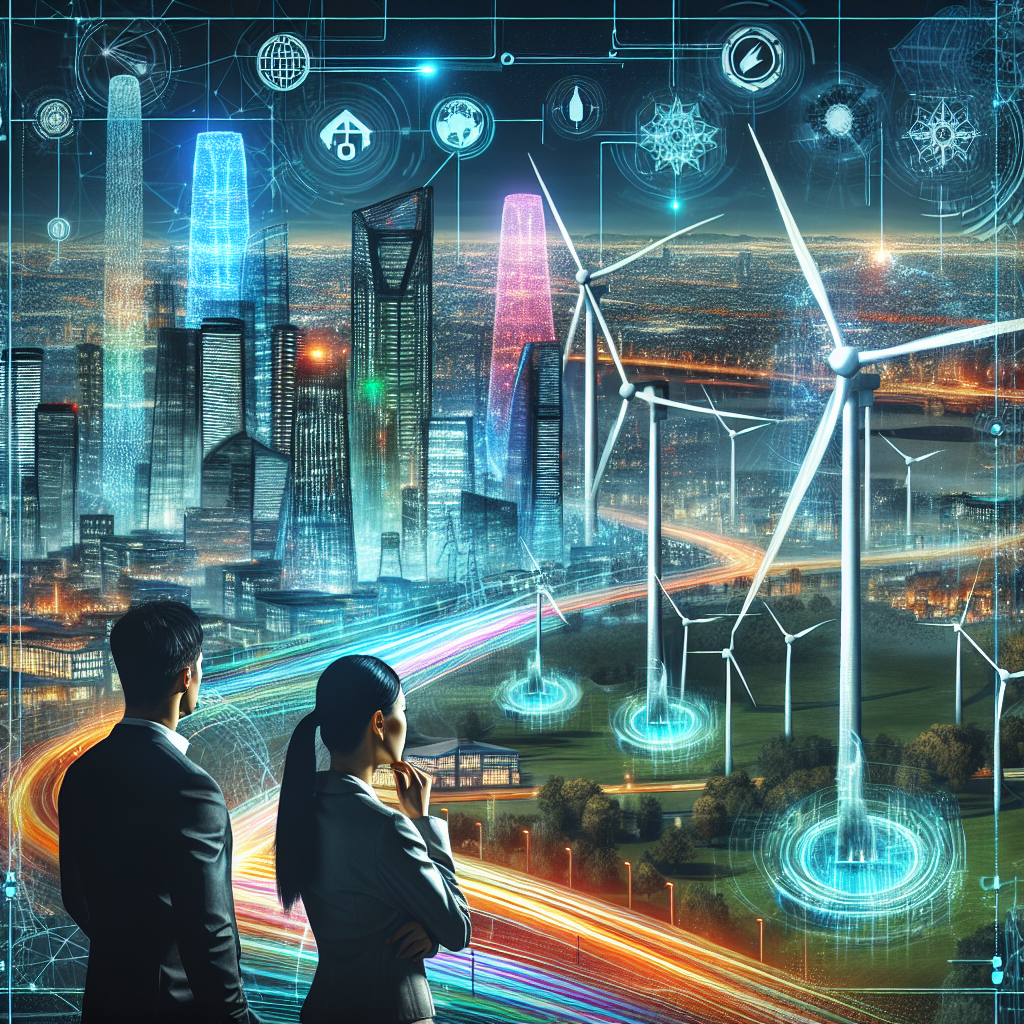In our increasingly digital world, the way we manage and distribute energy is evolving. Traditional power systems, which have relied heavily on central generation and one-way communication, are being supplanted by smart grids. These modern networks not only enhance the reliability and efficiency of energy delivery but also pave the way for sustainable practices. This article delves deep into the concept of smart grids and their transformative impact on energy distribution in the 21st century.
What are Smart Grids?
Smart grids are advanced electrical grids that utilize digital technology to monitor and manage the transport of electricity from all generation sources to meet the varying electricity demands of end-users. They seamlessly integrate traditional power sources with renewable energy, facilitating a more resilient and responsive system.
Key Features of Smart Grids
- Two-Way Communication: Unlike traditional grids, smart grids allow for real-time, two-way communication between utilities and consumers. This transparency fosters better energy management.
- Integration of Renewable Energy: Smart grids can effectively integrate various renewable energy sources like solar, wind, and hydro, promoting sustainability.
- Automated Monitoring: Sensors and smart meters provide utilities with data to optimize energy distribution, identify outages, and respond swiftly to issues.
- Enhanced Security: Advanced cybersecurity measures ensure that the grid is protected from physical and digital threats, safeguarding critical infrastructure.
Benefits of Smart Grids
The transition to smart grids presents numerous benefits that are crucial for the future of energy distribution.
1. Improved Efficiency
Smart grids reduce energy losses through real-time monitoring and adjustments. This leads to lower operational costs and improved efficiency across the distribution network.
2. Enhanced Reliability
With automated monitoring and quick response mechanisms, smart grids can detect and isolate faults, reducing downtime and improving service reliability.
3. Consumer Empowerment
Smart meters empower consumers to monitor their energy usage in real-time, enabling informed decisions about consumption and savings. Users can adopt energy practices that reflect their needs and preferences.
4. Environmental Impact
By integrating renewable energy sources and promoting energy efficiency, smart grids significantly reduce greenhouse gas emissions. This alignment with sustainability goals is vital for combating climate change.
5. Economic Growth
The advanced technologies associated with smart grids create jobs in various fields, from IT to engineering. They stimulate innovation and provide a platform for new business models and services.
Challenges in Implementing Smart Grids
While the benefits of smart grids are tremendous, their implementation is not without challenges:
- High Initial Costs: The upfront expenditure for infrastructure upgrades and technology integration can be significant.
- Regulatory Hurdles: Navigating regulatory landscapes can delay deployment and integration efforts.
- Cybersecurity Risks: As systems become more interconnected, ensuring their security is critical to protect against potential threats.
Global Trends in Smart Grids
Countries around the world are embracing smart grid technology at varying rates. Regions leading the charge include:
- United States: Extensive investment in modernizing infrastructure and integrating smart technology.
- Europe: Strong focus on sustainability has led to significant advancements in smart grid deployment.
- Asia: Rapid urbanization drives the need for smarter energy management solutions.
The Future of Smart Grids
The outlook for smart grids is promising. Ongoing technological advancements will further enhance their efficiency and resilience. As electric vehicles become mainstream and the demand for renewable energy increases, smart grids will play a crucial role in managing this transition smoothly.
Conclusion
Smart grids represent a significant leap forward in energy distribution, combining technology and sustainability to create a more resilient and efficient electrical grid. By empowering consumers, integrating renewable energy, and enhancing reliability, they pave the way for a brighter, greener future. As we continue to innovate and adapt, smart grids will undoubtedly be at the forefront of the energy revolution.
FAQs
1. What is the main goal of smart grids?
The main goal of smart grids is to optimize the distribution and consumption of electricity by integrating advanced technology, enhancing efficiency, reliability, and sustainability.
2. How do smart grids contribute to renewable energy use?
Smart grids facilitate the integration of various renewable energy sources, allowing for better management, storage, and distribution of clean energy.
3. Are smart grids safe from cyber threats?
While smart grids can be vulnerable to cyber threats, robust cybersecurity measures are essential for protecting critical infrastructure and ensuring a secure energy supply.
4. What role do consumers play in smart grids?
Consumers have greater control over their energy usage through smart meters, enabling them to make informed decisions and contribute to energy efficiency initiatives.
5. What are the financial implications of transitioning to a smart grid?
Although there are high initial costs for infrastructure development, smart grids can lead to long-term savings and economic growth through improved efficiency and the creation of new job opportunities.





